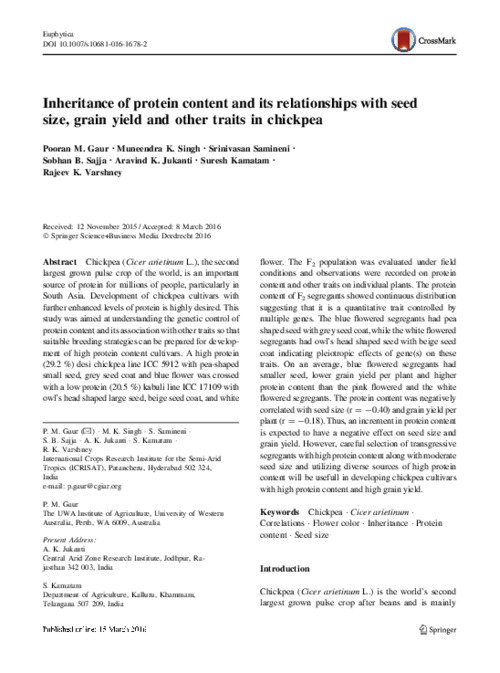Inheritance of protein content and its relationships with seed size, grain yield and other traits in chickpea
Abstract
Chickpea (Cicer arietinum L.), the second
largest grown pulse crop of the world, is an important
source of protein for millions of people, particularly in
South Asia. Development of chickpea cultivars with
further enhanced levels of protein is highly desired. This
study was aimed at understanding the genetic control of
protein content and its associationwith other traits so that
suitable breeding strategies can be prepared for development
of high protein content cultivars. A high protein
(29.2 %) desi chickpea line ICC 5912 with pea-shaped
small seed, grey seed coat and blue flower was crossed
with a low protein (20.5 %) kabuli line ICC 17109 with
owl’s head shaped large seed, beige seed coat, and white flower. The F2 population was evaluated under field
conditions and observations were recorded on protein
content and other traits on individual plants. The protein
content of F2 segregants showed continuous distribution
suggesting that it is a quantitative trait controlled by
multiple genes. The blue flowered segregants had pea
shaped seed with grey seed coat,while thewhite flowered
segregants had owl’s head shaped seed with beige seed
coat indicating pleiotropic effects of gene(s) on these
traits. On an average, blue flowered segregants had
smaller seed, lower grain yield per plant and higher
protein content than the pink flowered and the white
flowered segregants. The protein content was negatively
correlated with seed size (r = -0.40) and grain yield per
plant (r = -0.18). Thus, an increment in protein content
is expected to have a negative effect on seed size and
grain yield. However, careful selection of transgressive
segregants with high protein content alongwith moderate
seed size and utilizing diverse sources of high protein
content will be usefull in developing chickpea cultivars
with high protein content and high grain yield

